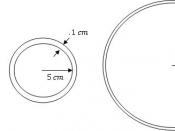Scaling is described as the structural and functional consequences of changes in size and scale among otherwise similar organisms. What this means is that similar organisms are affected differently by the influence of gravity, depending on their size. If an animal was doubled in size, then spherical body of the larger animal would have twice the radius of the smaller original. The volume of a sphere is (4ÃÂ/3)r3 and the surface area of a sphere is (4ÃÂ)r2. So the surface to volume ratio is 3/r. As the animal becomes larger, the surface to volume ratio decreases. Therefore we would come across many problems if we tried to enlarge or shrink certain organisms.
One of the problems would be that if an animal was proportionally enlarged, its skeleton would most likely be no longer able to support it. In terrestrial vertebrates, the skeleton provides structural support against the crushing stress of weight.
With increasing body size, body weight increases at a faster rate that the weight-supporting capacity of the skeleton. The body weight is proportional to its volume, and the volume is proportional to the cube of its linear dimensions. But the strength of bone is proportional to its cross-sectional area, and its area is proportional to the square of the linear dimensions. Thus, if linear dimensions l are doubled, body weight will increase by a factor of eight, being 2l3 , while the bone strength increases only by a factor of four, being 2l2. So with increasing body size, animals would require a larger fraction of their body mass to be skeleton in order to survive.
Another problem associated with scaling is the right amount of oxygen intake. Insects absorb air through spiracles, which are small openings on the surface of the abdomen which lead to tracheae, from...


